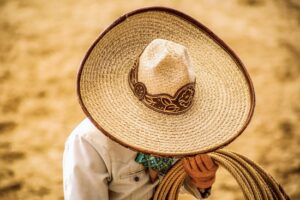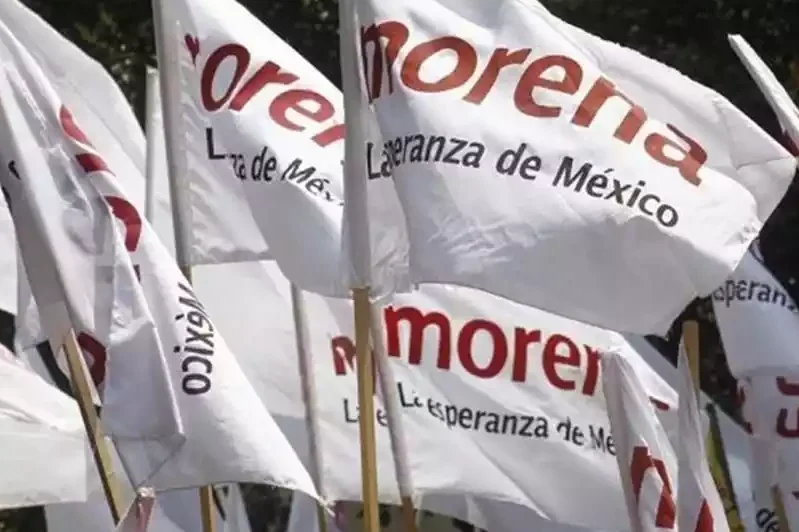The Fascinating World of Mexican Hats: Tradition, Styles, and Cultural Significance

If there is something very particular in Aztec lands is the use of Mexican hats, it is part of the culture, fashion, and roots of citizens throughout Mexico.
It is not only about a party, or a sports or popular celebration, the use of Mexican hats goes beyond the everyday.
We could say that Mexican hats are a brand that leaves a very particular stamp; the whole world recognizes them.
However, the imprint of Mexican hats has part of the origin, as well as fashion, so there are adaptations and particularities to make this product of Mexican clothing more marketable.
As you may know, the most popular Mexican hats are the charro or mariachi hats, in the orbit of the most colorful and worn in the country.
But due to the cultural influence of other cultures, some hats have emerged in the last decades, or some of them, of very regional use, have expanded in their use and popularity.
For this reason, being such a popular garment, it is complicated to determine its origin, since they are elements of folklore, without an exact date of birth.

Mexican hats and their origin
In modern times, the word sombrero meant wide-brimmed Mexican hat, but in reality, the Mexican hat originated in Spain.
Already in the 17th century, Spaniards wore a sombrero cordobés, that is, a hat with a very wide brim.
READ MORE: EXPLORING THE DEPTHS OF MEXICAN ROCK.
In relation to its name, this hat consists of a flat crown 10 to 12 cm high and a relatively short and perfectly flat brim 8 to 12 cm wide.
For some people, Mexican hats were made by mestizos of European and Amerindian origin who worked in the southern United States and Mexico.
While others claim that Mexican hats were created by horsemen from Guadalajara, the capital of Jalisco, who added them to their uniforms.
Others continue to believe that the first cowboys who settled in Texas took the Spanish hat as an effective remedy to protect themselves from severe sunburn.
The Filipinos also wear sombreros, who settled there under Mexican influence as part of the Manila galleon trade that took place between Manila and Acapulco (New Spain) from 1565 to 1815.
Finally, this very particular and expressive hat also has its version in Colombia, especially among the Zenú tribes.
But of course, movies and television gave Mexican hats a universal connotation, as the classic Mexican dressed with this garment, something a little derogatory but accepted.
Most of the traditional Mexican hats are worn on national holidays, at festivals, for work or simply to cover up from the inclement Mexican sun, but the characteristic that all these types of Mexican hats share, is that they all carry with them a great craftsmanship.

The types of Mexican hats
The variety of these hats is intimately related to the climate and the place in Mexico where you are, even the national holiday of the moment.
As we have already mentioned, the most popular Mexican hats are the charro or the mariachi hat.
But there are other very popular Mexican hats, among them:
Jipijapa Mexican hat.
In beautiful Bécal, a town located north of Campeche, the history of the iconic jipijapa hat begins.
According to history, the first Mexican jipijapa hat was woven in 1872. Since then, hundreds of families dedicated themselves entirely to the weaving of jipijapa hats that were commercialized from the town of Bécal to different cities of the country.
These hats are made with the leaves of the jipijapa palm that measures between one and two meters in height.
Around it is a black ribbon that is a symbol of this type of hat.
Caliente Hat
It is one of the Mexican hats used in the region of Tierras Calientes. It was born specifically in the town of Tlapehuala-Guerrero.
There the skilled artisans began with the weaving of this hat using the royal palm. Its crown is high and straight, while its brims are wide and curved upwards along with a black ribbon representative of this type of hat.
Texan Hat
This is a typical hat of the northern part of Mexico and the southern part of the United States.
It is made from wool, rabbit fur, chinchilla or beaver fur.
In addition, the hat can be of the closed or duranguense type. It is also known as “sombrero norteño” and is very typical of the clothing of norteño music groups.
READ MORE: DISCOVERING GORDITAS DE MEXICO.
Jarocho hat
Among the Mexican hats, it is typical of Veracruz and is part of the typical dress used to celebrate the Jarocho musical genre.
It is made from royal palm and its main characteristic is that its design has “cuatro pedradas”, that is, it has four cavities in each corner of the crown. It is decorated with feathers, colorful ornaments or a black ribbon.
Costaño Hat
Traditionally used and manufactured in the town of Guerrero, this hat is one of the most popular, as it is commonly used by musical groups, politicians and the working class in the fields.
It is made from very thick palm, which gives them their resistance to different climates. Its wings are long, thick and semi curved, it also has holes to provide ventilation.
Charro Hat
It is the most popular Mexican hat, it is of Spanish origin and according to history it was in San Luis de Potosi that the Chichimecas began to make them from palm fibers.
Today it is made with felt, wheat straw or rabbit hair. It is used by horsemen called charros; they are wide brimmed, have four pedradas and are higher at the back.
However, the shape changes depending on the area and climate of Mexico where you are.
A curious fact about this type of Mexican hats is that the real charros hats are made by artisans specialized in their manufacture and are not so similar to those found in any store.
The cultural importance of the charro hat in Mexico
The charro hat has transcended borders and has become a symbol of Mexican culture in global popular culture.
Mexican hats have been seen in movies, television shows and even in fashion.
Celebrities and musicians around the world have adopted these hats as a statement of style and appreciation for Mexican culture.
Charro hats are much more than pieces of clothing; they are living symbols of a rich Mexican tradition.
Through their history, design and cultural significance, these hats have endured and continue to be an important legacy of Mexico throughout the world.






